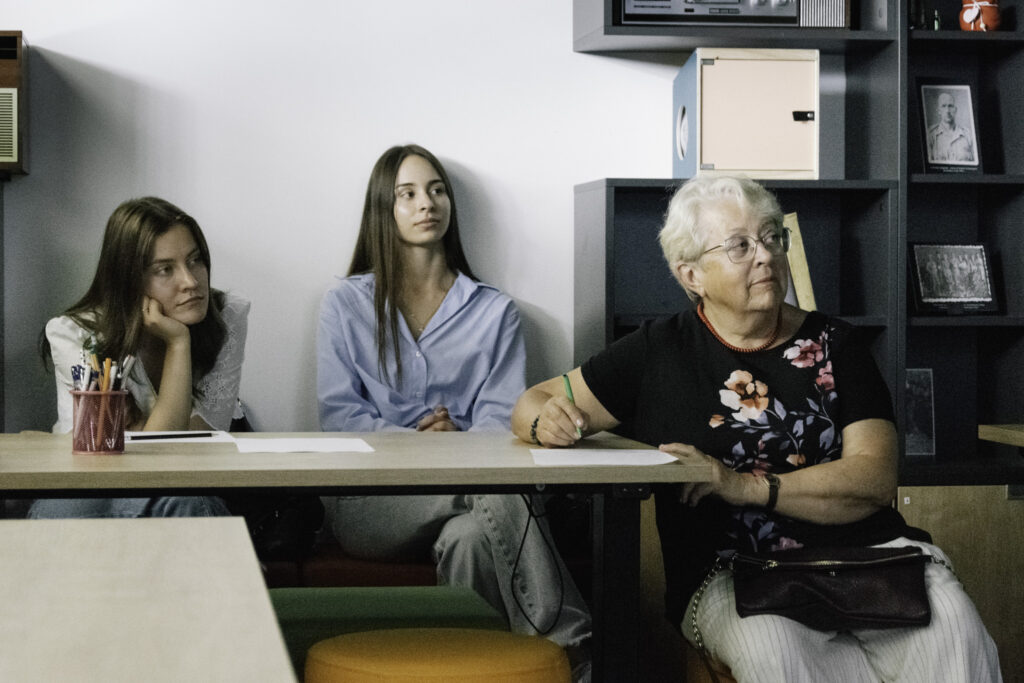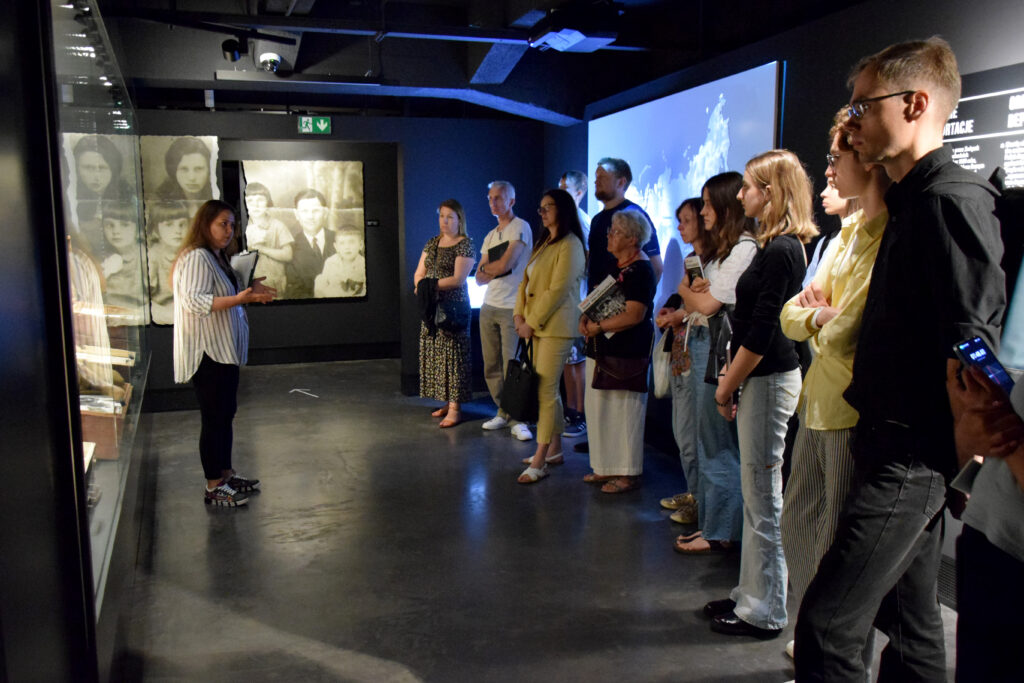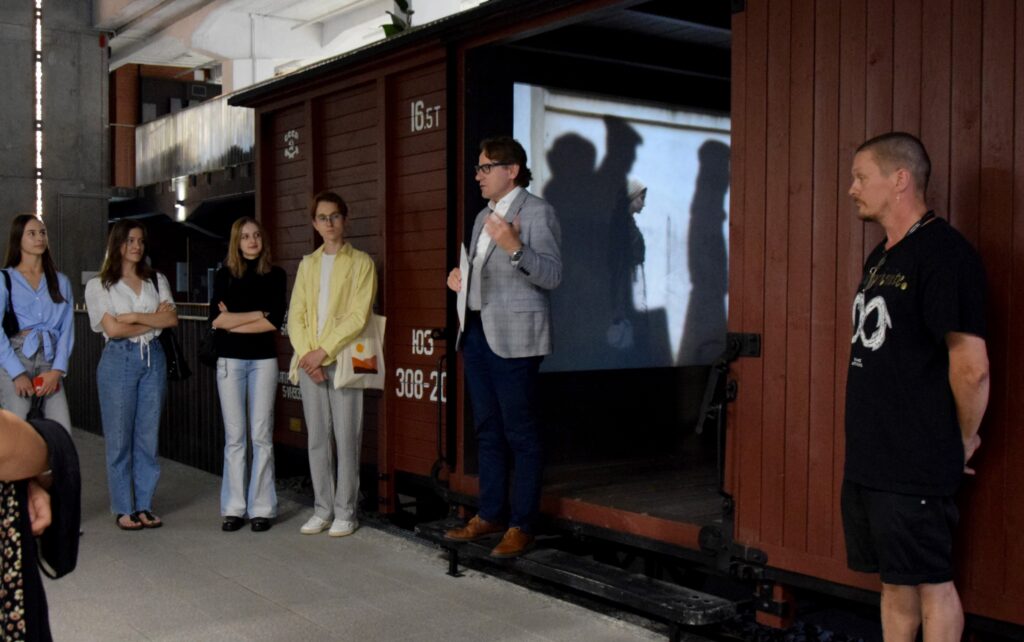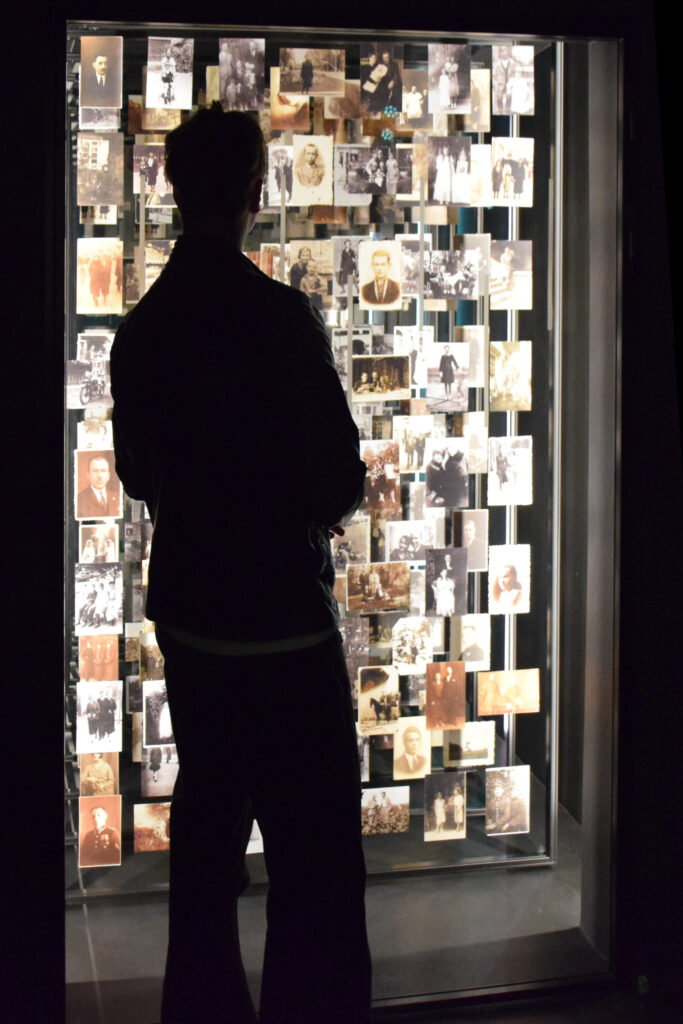During the meeting at the Sybir Memorial Museum, Finnish visual artist Juhana Moisander discussed his art, inspirations, working methods, and the vision for a new piece he is creating as part of the international Art of Remembrance project.
Finnish artist Juhana Moisander visited the Sybir Memorial Museum in Białystok for the first time. During his several-day stay, he is exploring the museum’s collections, space, and the history of deportations in order to create a site-specific video installation that will become part of an international exhibition and embark on a European tour in 2026. His visit also became an opportunity for his first public meeting with local residents.
Professor Wojciech Śleszyński, Director of the Sybir Memorial Museum, welcomed the artist and audience, expressing pride and satisfaction in being part of the pan-European Art of Remembrance project:
“We are honored that our museum is part of an exclusive group of four institutions – from Belgium, France, Italy, and Poland – jointly delivering the Art of Remembrance project. Drawing on experiences from World War II and authentic sites of memory, artists will create works that will be presented in 2026 – including here in Białystok.”
During the meeting, Juhana Moisander presented his artistic practice, which develops along two main paths: experimental contemporary art and site-specific projects deeply connected to a location’s architecture, time, and community. He shared examples of some of his most compelling works, including The Flood – a piece created for the 80th anniversary of the outbreak of World War II and the bombings of Helsinki. The project features the motif of children playing with lead soldiers, juxtaposed with memories of war. He also showcased a monumental 1:1-scale installation depicting a crowd of people, inspired by Baroque mass dramaturgy and collective emotions, tracing the process from its initial sketches through to its years-long development. Another striking example was ”The Emperor’s New Groove”, portraying a liar figure with a mask and flute, whose gestures evoke the iconography of totalitarian speeches.
Juhana emphasized that the depth of Siberia’s history is profoundly moving and calls for in-depth exploration and thoughtful engagement with the stories of the deportees. He plans to work with testimonies from Sybiraks, unexhibited archival objects, and the motif of songs. The resulting installation will be a mobile video work, enabling its display not only at the four partner institutions but also in other locations across Europe.
After the artist talk, attendees joined a special guided tour of the museum’s permanent exhibition. The tour focused on the creative expression of Sybiraks: drawings made in secret, embroidery and decorations crafted from found materials, songs written down, and diary entries. These micro-artworks – created despite harsh restrictions and extreme deprivation – helped sustain memory, dignity, and human connection, bearing witness to the idea that art can be a form of survival.
Moisander will return to Białystok in the autumn for a multi-week residency, during which he will begin the actual creation of the work. The joint exhibition of the four institutions will premiere in March 2026 in the Netherlands, after which it will travel to partner venues in Belgium, France, Italy, and – of course – the Sybir Memorial Museum. Updates on the next stages of this artistic collaboration will follow in due course!
The Art of Remembrance project is co-funded by the European Union. For more information about the project, visit the website: www.art-of-remembrance.eu.
[This article was written by the Sybir Memorial Museum Team and published on the museum’s website on July 23th]







